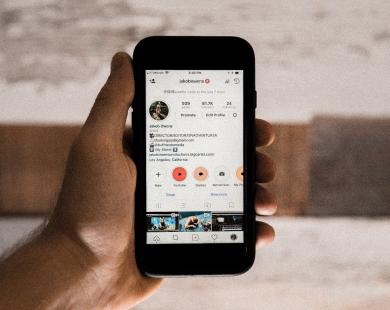How To Track Influencer ROI

Often, businesses are scared of influencer marketing because of the all too common assumption that you can’t track its success. How do you measure the success of an influencer? How do you know they were the ones which drove more traffic to your site?
Well, trust us, you can, and to prove it here’s some simple ways in which you can start tracking your influencer marketing campaigns.
Affiliate Links & UTM Parameters
If your company has Google Analytics set up then, by using UTM parameters, tracking influencer campaigns is a dream! By creating an affiliate link for your influencer to use in posts and content, you will be able to track the click-through rate, the number of sales, and the total spend of each customer.
You can then add a UTM parameter to this affiliate link URL and track the results through Google Analytics. You can then pull these fancy figures through into a nice report created in Google Data Studio (as you can tell we are big fans of Google). You can learn more about UTM tracking, and the benefits it can bring here.
Tip: In Google Analytics you’ll be able to see the origins, and a breakdown, of your site traffic including the traffic from each social platform. Using this data, pick influencers from the social platform which drives the most traffic for ultimate exposure.
Social Media Analytics
Platforms such as Twitter, Facebook and Instagram have their own built-in analytic platforms. They enable you to track likes, comments, shares and click-through rates; all valuable measurements for brands. When negotiating the terms of the campaign, explain you would like a weekly, monthly or quarterly screenshot of the analytics.
However, it is important to note that they will need a business Instagram and Twitter to be able to access analytic data. These are free to set up or switch to, but many small, micro influencers may use their personal socials and prefer not to switch to a business account.
Codes
One of the simplest ways to track influencer marketing success is through codes. By offering the influencer a unique, discount code to give to their followers you will directly see the customers which have come from that influencer.
Cheap, quick and easy to do, codes are a favourite amongst marketers. Although it is important to note that this will only show you those who have made a purchase on your site. Your influencer may have encouraged a customer to browse the site, show the code to a friend or follow your business on social, all additional benefits you can’t track with a code.
Tip: When discussing with the influencer, ask them to save your code as a highlight on their Instagram. This way new followers will immediately see the code highlight at the top of the screen, increasing visibility and hopefully code usage!
Engagement Rate
Simple and straightforward, another method of tracking is to monitor engagement on the posts manually. Have a stalk of the comments, likes and shares. Are they more or less likes than the influencers usual posts? Has it received positive feedback from people tagging their friends? Engagement is where the value of influencer marketing lies so if the audience is loving a post you know it has performed well.
This method is great for posts which are here to stay but for quick content such as Snapchats or Instagram Stories, it is much harder to track.
Tip: Check the comments and likes on the influencer’s post for spam. Some of the likes or comments could be from fake accounts, creating fake engagement and ultimately no real traffic or sales. Genuine engagement is priceless.
If you’re interested in implementing influencer marketing into your business strategy, then email us at info@collectivedge.com or call us on 0117 403 3125. You can talk to one of our influencer experts who will show you how to create, track and run your own influencer campaigns.





Leave a Reply